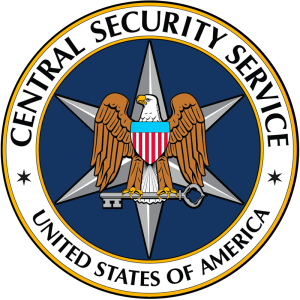The National Security Agency (NSA) is one of the United States government’s premier intelligence agencies, responsible for collecting, analyzing, and protecting the nation’s electronic communications and signals intelligence. Established on November 4, 1952, by President Harry S. Truman, the NSA operates under the Department of Defense and plays a critical role in safeguarding national security through its electronic surveillance and cryptography efforts.

History and Background of the NSA
- Established in 1952 throughout the Cold War, the NSA has wealthy records in American intelligence and safety. It was created to centralize signals intelligence and cryptography efforts. Throughout the Cold War, it played a vital role in monitoring foreign communications, mainly from the Soviet Union. The NSA is thought for pioneering encryption and cryptanalysis strategies and developing the Data Encryption Standard (DES).
- Controversy and oversight have been recurring topics because of the NSA’s secretive nature. It operates globally, taking part with foreign intelligence organizations and using the current generation. In the twenty-first century, Edward Snowden’s leaks exposed mass surveillance applications, sparking debates on privacy and national safety.
- The NSA is led by means of a 4-star navy officer and is organized into directorates for signals intelligence, cybersecurity, and more. Today, it continues to adapt to the digital age, focusing on each defence and offence in cybersecurity, protecting country-wide safety, and advancing cryptographic generation.
NSA's Mission and Responsibilities
The National Security Agency (NSA) has a multifaceted mission and crucial responsibilities:
- Signals Intelligence (SIGINT): Collects and analyzes foreign electronic communications for vital intelligence.
- Information Assurance: Protects U.S. government data from unauthorized access, ensuring confidentiality and integrity.
- Cybersecurity Operations: Defends national security by countering cyber threats, including state-sponsored attacks.
- Cryptanalysis and Cryptography: Develops and deciphers codes to secure communications and gather intelligence.
- Global Surveillance: Monitors electronic communications worldwide to gather intelligence on foreign adversaries.
- Counterterrorism: Supports counterterrorism efforts through communication analysis to detect and prevent threats.
- Counterintelligence: Identifies and mitigates threats from foreign intelligence services, safeguarding classified information.
- International Partnerships: Collaborates with foreign intelligence agencies, sharing intelligence and addressing global security challenges.
NSA's Role in Cybersecurity
The NSA’s role in cybersecurity includes:
- Cyber Defense: Protecting government and military networks from cyber threats.
- Threat Intelligence: Gathering and analyzing cyber threat data to proactively defend against attacks.
- Guidance: Providing cybersecurity guidance to agencies, businesses, and critical infrastructure.
- R&D: Developing advanced encryption and cybersecurity technologies.
- Information Sharing: Collaborating with partners to share threat information.
- Monitoring: Utilizing sophisticated systems for real-time threat detection.
- Cryptographic Expertise: Leading in cryptography for secure communications.
- Incident Response: Assisting in investigating and mitigating cyber incidents.
- Critical Infrastructure Protection: Safeguarding vital sectors like energy and finance.
- International Collaboration: Working with global partners to address cyber threats.
Opportunities and Recruitment
- Career opportunities and recruitment at the National Security Agency (NSA) offer unique paths for individuals interested in national security, technology, and intelligence. The NSA provides diverse roles for professionals with various skills and backgrounds.
- From cybersecurity experts to linguists, cryptanalysts, and IT specialists, the agency seeks talented individuals to contribute to its mission. Recruitment typically involves a stringent selection process that assesses candidates’ qualifications, clearances, and suitability for sensitive roles.
- The NSA values diversity and encourages individuals from different backgrounds to apply. Once onboard, employees receive comprehensive training, competitive benefits, and opportunities for career advancement. Working at the NSA is a chance to serve your country, work on cutting-edge technology, and make a significant impact on national security.
NSA programs
- PRISM- PRISM, the most well-known of the NSA’s operations, is aimed at gathering data from nine key Silicon Valley tech companies: Facebook, Google, Yahoo, Microsoft, Paltalk, Skype, YouTube, Apple, and AOL. It gathered emails, file transfers, photographs, voice recordings, and other information.
- FAIRVIEW- The NSA has access to enormous amounts of international internet traffic travelling via domestic US networks thanks to AT&T’s aid. For decades, the NSA is said to have worked closely with US telecom companies.
- BLARNEY- This is a FAIRVIEW-affiliated international version of the PRISM programme. The National Security Agency (NSA) uses Blarney to build relationships with international telecom carriers in order to acquire access to their customer data.
Conclusion
In the end, the National Security Agency (NSA) is an exceedingly secretive and critical factor of the USA’s intelligence and protection infrastructure. Established for the duration of the Cold War, its undertaking has evolved to encompass a wide range of duties, along with indicators intelligence, cybersecurity, and shielding sensitive records. While its activities have regularly been shrouded in controversy and raised concerns approximately privacy and civil liberties, the NSA operates beneath strict oversight to strike a stability between country-wide safety and man or woman rights.
FAQs About NSA
The NSA, or National Security Agency, is a U.S. government agency responsible for signals intelligence (SIGINT), cybersecurity, and protecting sensitive information. Its mission is to gather intelligence, defend against cyber threats, and ensure secure communications.
The NSA was officially established on November 4, 1952, by President Harry S. Truman through a classified memorandum. It consolidated the functions of various predecessor organizations.
SIGINT stands for Signals Intelligence. It involves intercepting and analyzing electronic communications, providing vital intelligence on foreign adversaries, military activities, and potential threats to national security.
The NSA plays a crucial role in defending U.S. government and military networks from cyber threats. It conducts offensive and defensive cybersecurity operations to protect national security interests.
Related posts:
- AMC Full Form: Benefits, Components, Needs, Advantage
- ORS Full Form: Dehydration, Myths, Flavors, Varieties & Facts
- PCC Full Form: Importance, Types, Application Process
- PAN Full Form: Legal Provisions, Regulations,
- BRB Full Form: Productive, Routine, Distractions
- MCD Full From: Introduction, Responsibility, Challenges
- CT Scan Full Form: Scans, price, Advantages
- USA Full Form: History, Economics,Technology, culture




















